Poisonous plants for dogs – 10 to avoid to keep your pet safe
Hold off growing these poisonous plants for dogs to make your yard safe for pets
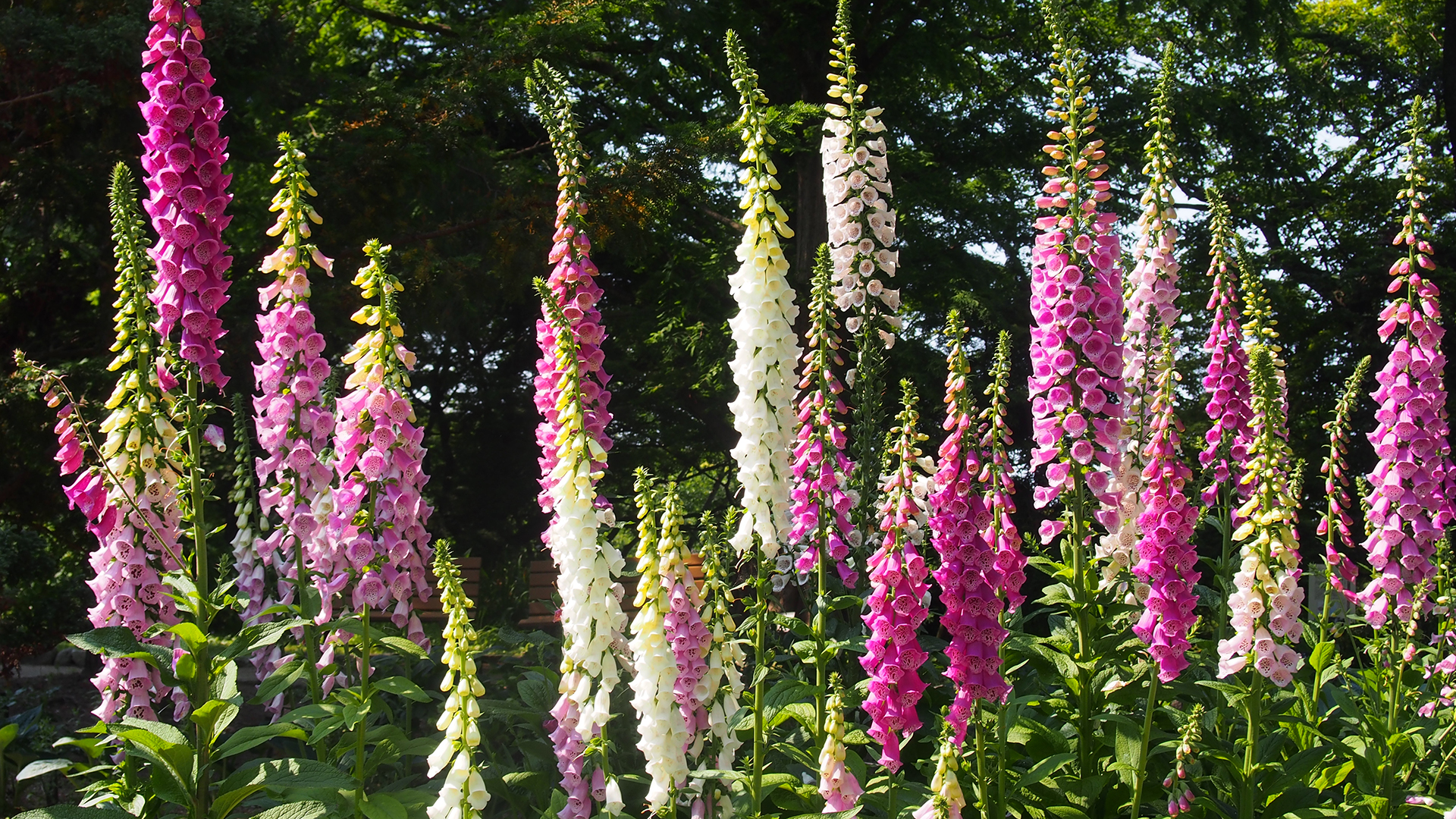

Although beautiful to look at, many of our favorites are poisonous plants for dogs and are best avoided. Puppies and young dogs are particularly curious and love to nibble, so stay well clear of any accidents by knowing which plants pose a real threat.
Like many animals, dogs tend to learn and explore with their mouths. Licking, chewing and chomping on plant material and other items found in their immediate surroundings all comes naturally, but unfortunately this can cause stomach upsets, infections or more serious health issues, even death.
While most dogs learn from experience or develop an instinctive wariness for strong-smelling plants or those that are high in toxins, there are some poisonous plants for dogs that are persistent, so take a close look at your yard and swap the prime plants culprits for safer varieties.
Poisonous plants for dogs
From shrubs with stunning foliage to delicate seasonal beauties such as narcissus, tulips and cyclamen, poisonous plants are not always obvious, so we’ve put together a guide to the most popular, so you and your pooch can enjoy home life outside stress free.
1. Castor oil plant
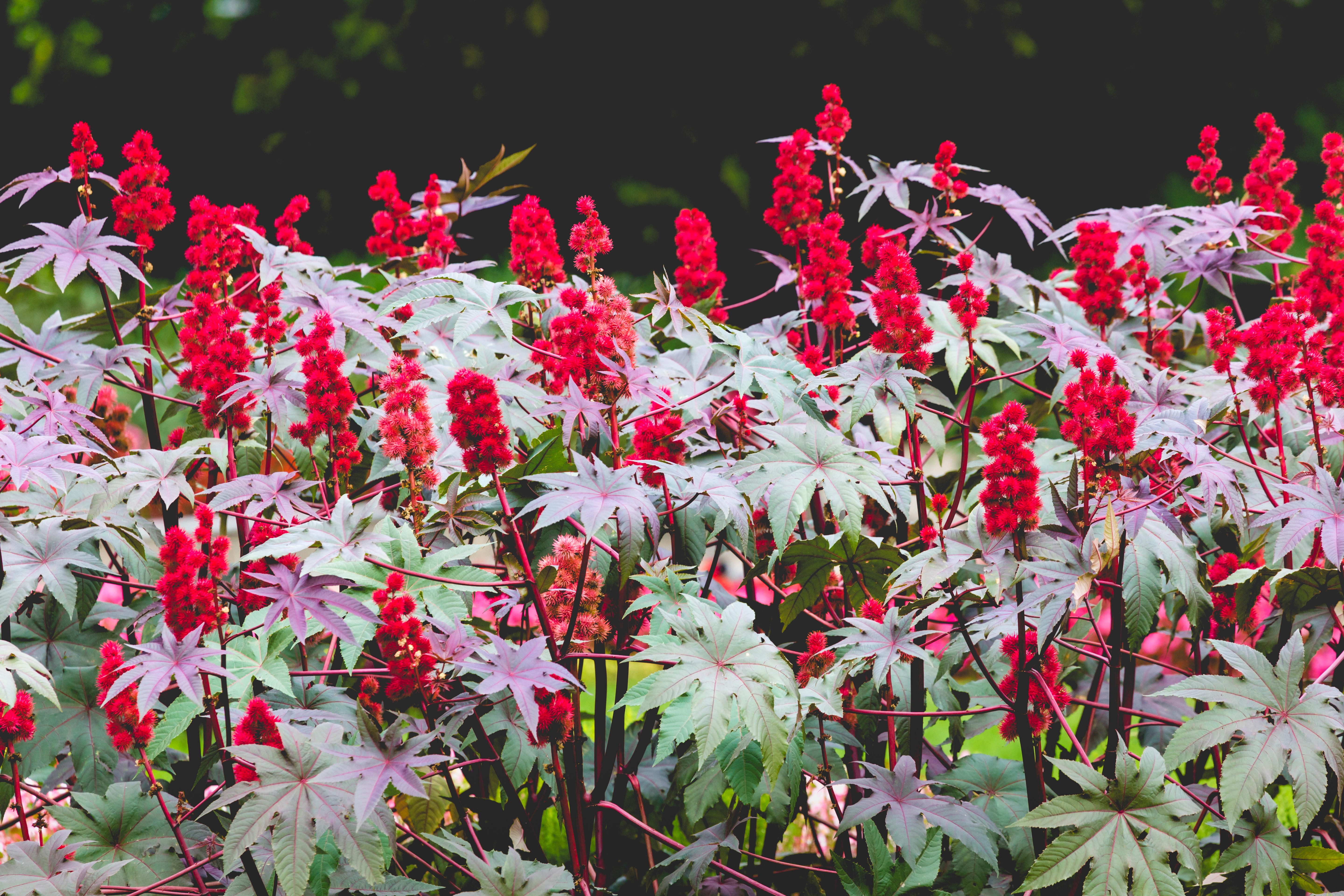
A striking architectural beauty, the castor oil plant thrives in USDA zones 8-12. Reaching heights of 4-5ft (120-150cm) with their stunning palmate lobed leaves and showy flower spikes, they make a real statement in pots and borders and adores a spot in full sun. All part of the plant contains ricin – one of the world’s strongest toxins – so are best avoided by owners of curious dogs.
As described by the ASPCA, ‘Ricin is a highly toxic component that inhibits protein synthesis; ingestion of as little as one ounce of seeds can be lethal. Signs typically develop 12 to 48 hours after ingestion, and include loss of appetite, excessive thirst, weakness, colic, trembling. As syndrome progresses, bloody diarrhea may occur, and convulsions and coma can precede death.’
Watch out for the seeds as these have the strongest concentration of toxins and be wary of any stray pruning’s that your pet may come across.
2. Cyclamen
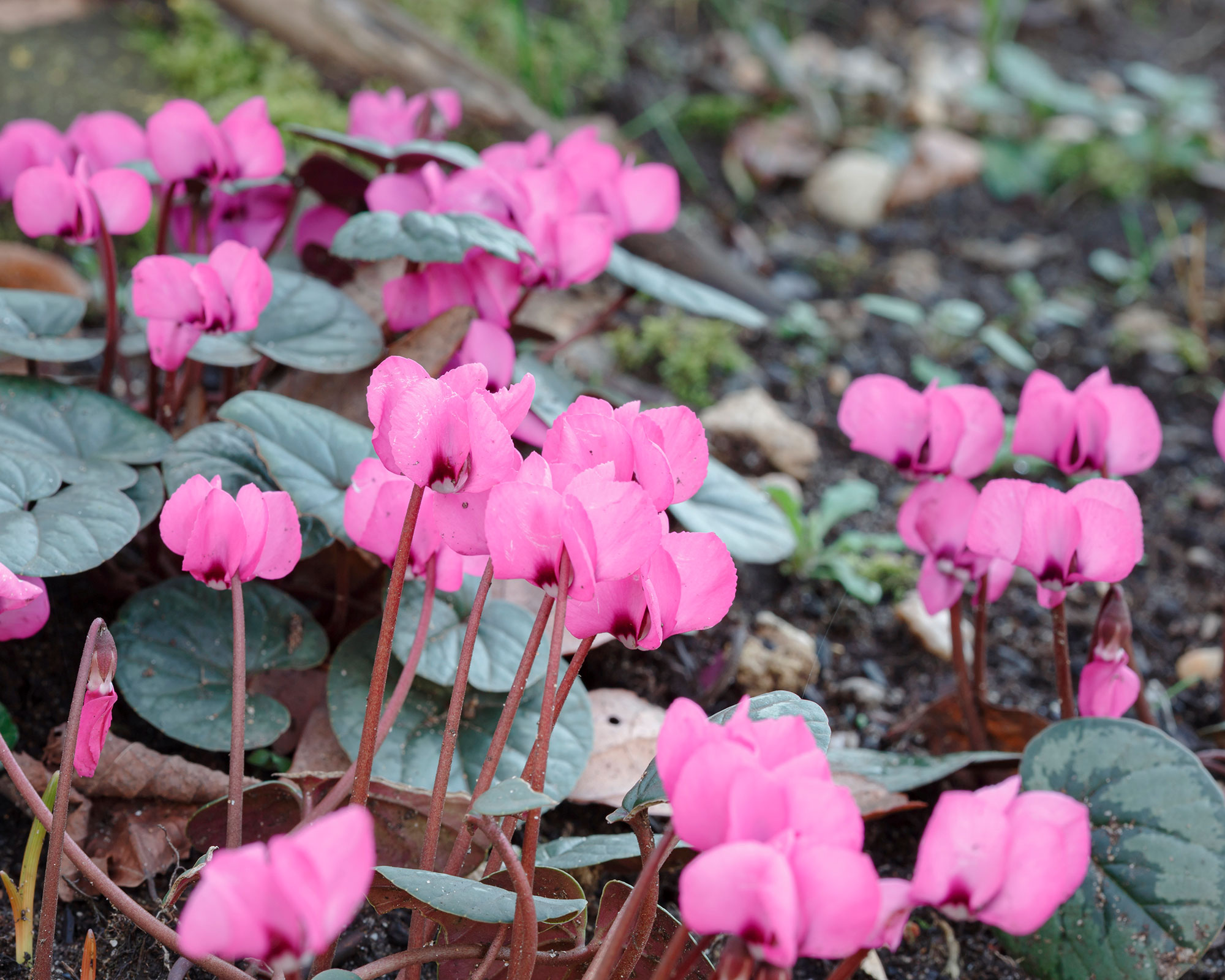
Some of the best winter plants for pots and borders, cyclamen are grown from tempting bite-sized corms. While cyclamens are beautiful and delicate to look at, they can cause serious sickness and even death in dogs.
Sitting near or slightly proud of the soil’s surface they can become a source of curiosity and even a morsel of leaf, stem or flower can result in a stomach upset. It’s the corms or tubers that have the highest concentration of toxic terpenoid saponins and can be really harmful, but most canines will need to devour a large quantity of these spring and fall blooming beauties to be fatal.
3. English ivy
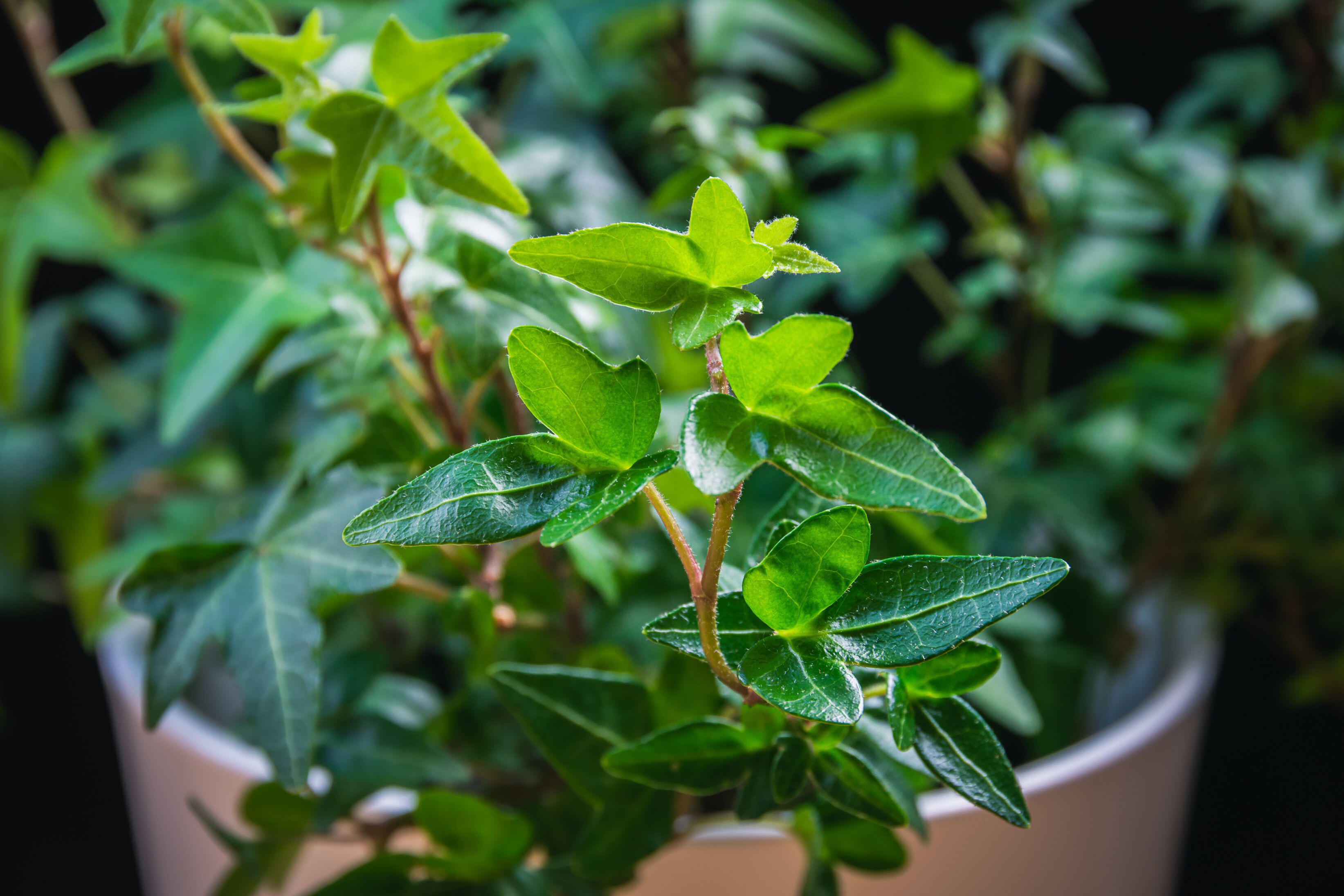
Commonly found both in the wild and sprawling through backyards, this attractive evergreen climber and ground cover plant is a stalwart of the northern hemisphere.
Often sold in plant nurseries and online retailers, ivy is a popular choice for window boxes, planters and hanging baskets but is best avoided if you have a curious canine at home. And if you have it already, it is best to get rid of ivy if your dog likes to chew on vegetation.
Experts at the Pet Poison Helpline advise: ‘The leaves and berries of English Ivy contain the toxin pentacyclic terpenoids. Clinical signs drooling, vomiting, and diarrhea are expected following ingestion by pets.’
4. Oleander
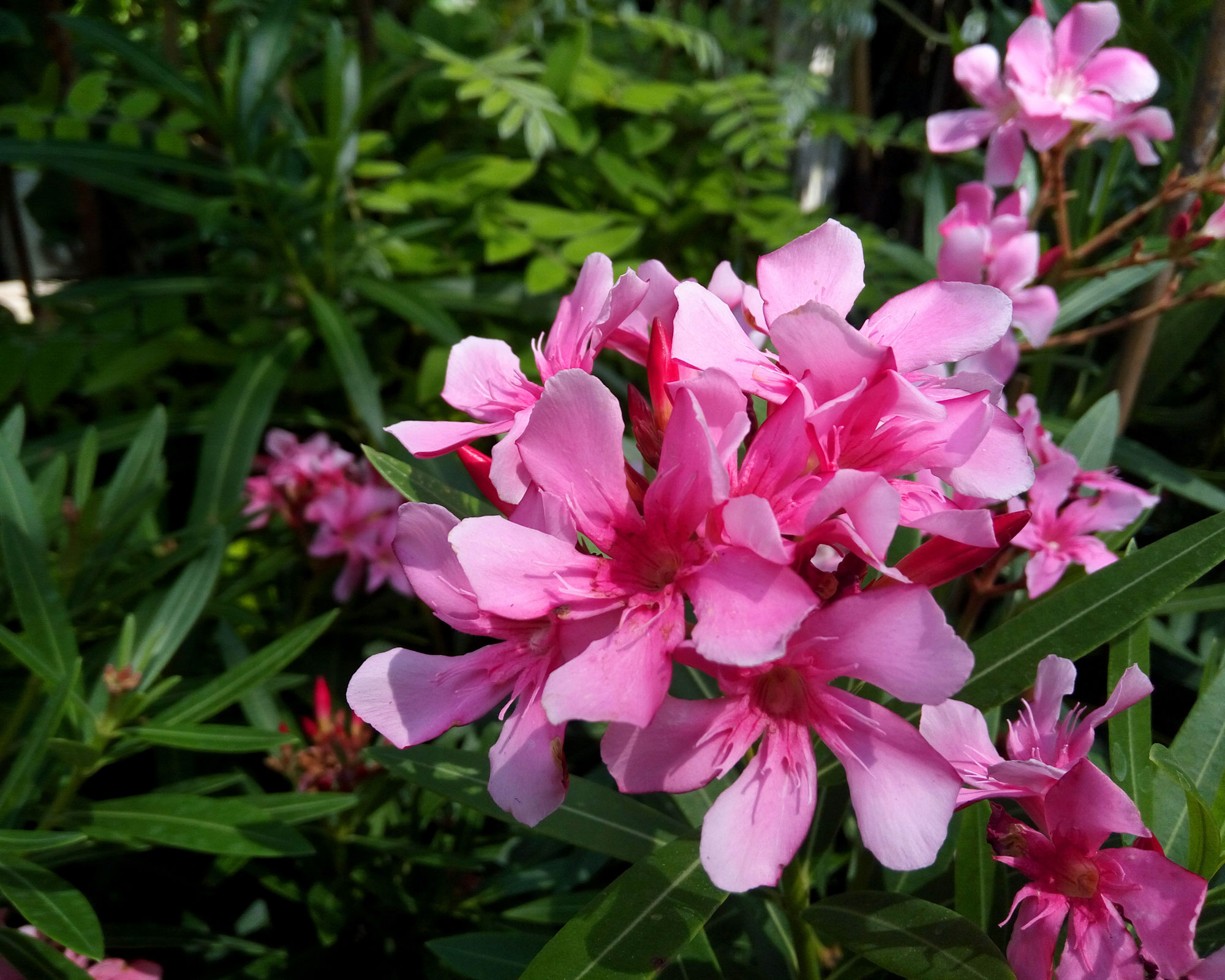
Oleander made our list of Mediterranean plants to grow. A handsome evergreen shrub that thrives in warmer climates, such as Hawaii, California and Texas, oleander is tough and happy growing in most soil conditions, with sunny aspect.
Smothered in red, pink or white blooms in summer they make useful hedging and boundary plants as well as low maintenance focal points for large planters and borders.
Unfortunately, they are highly toxic to dogs, most animals and can cause skin irritation to us too. Containing cardiac glycosides, contact with or eating any part of these plants can result severe breathing problems and heart palpitations.
5. Lily of the valley
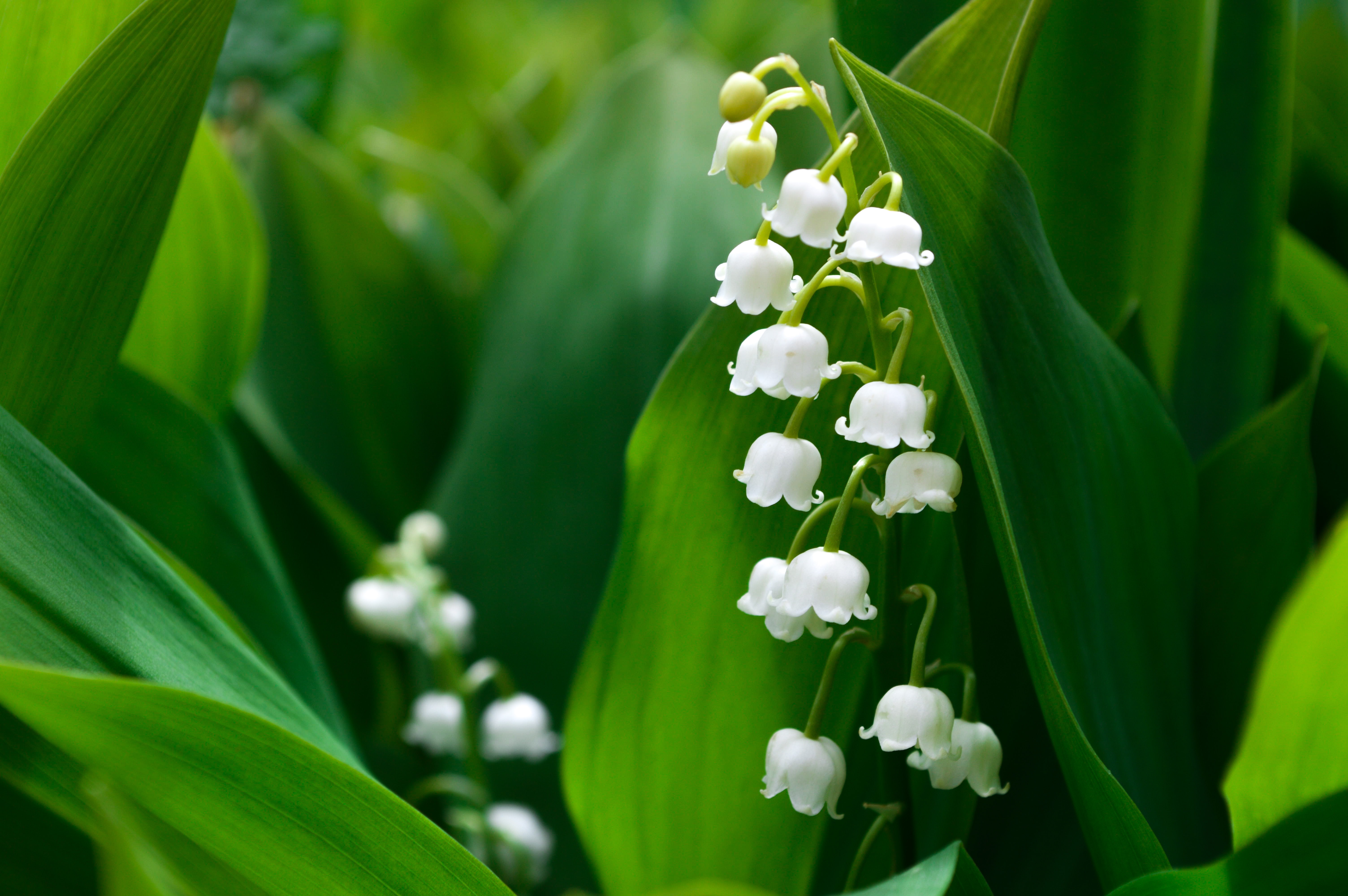
Growing widely in USDA Zone 2-9, the delicate nodding white bells of Lily-of-the-valley are a frequent sight in the wild and gardens. These plants make some of the best shade plants – provided they have enough moisture – and can spread rapidly too. These fragrant beauties are not feline-friendly however, and cat parents should be aware.
Containing over 38 cardenolides, all parts of the plant are toxic to most animals and cause severe heart irregularities and gastro irritation even if the tiniest part is digested.
FirstVet advises that ‘if you suspect that your pet may have ingested lily of the valley in part or in whole, see a veterinarian immediately, as your pet’s life may be in danger. Prognosis depends on the size and health status of the pet, the amount consumed, and the part of the plant that was eaten. Although all parts are toxic, consumption of the bulb may lead to death within a couple of hours.’
6. Yew
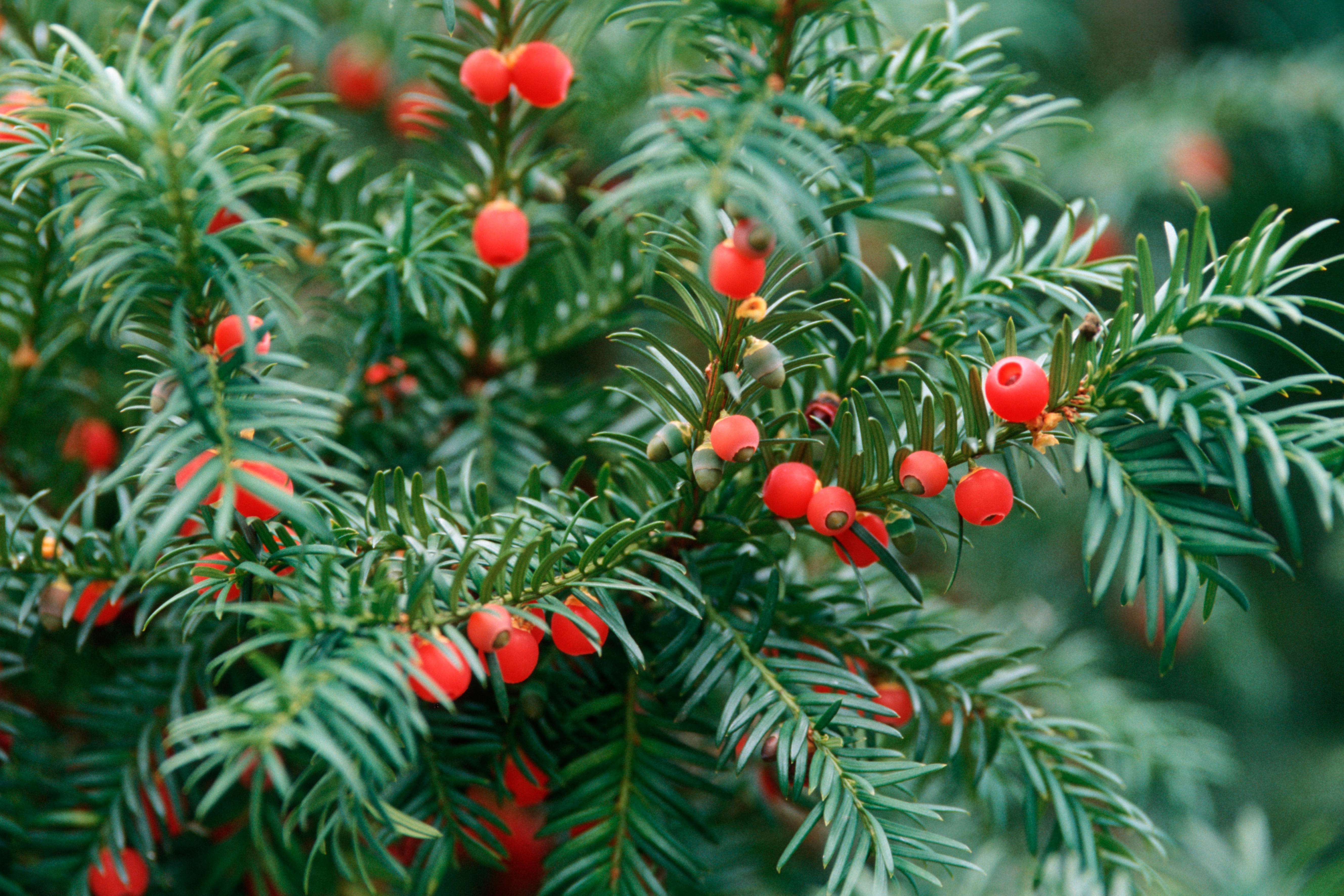
Recognizable for its fine, dark green foliage and juicy red fruits yew can be widely found growing wild, as topiary and is grown as privacy hedging.
A long-lived evergreen, the needles and seeds – contained with the bright red berry-like covering – are hugely lethal to pets, animals and humans. Containing a poisonous alkaloid, the taxanes, that are particularly concentrated in the tips of the leaves, disrupt the division of cells within the body leading to disruption of blood pressure, heart rate and breathing difficulties.
The effects are so powerful and reliable that scientists have explored these effects further and successfully used these toxins to treat prostrate and breast cancers.
7. Foxgloves

A common sight in early summer, these purple floral spires put on a stunning display along woodland fringes and dotted amongst herbaceous borders. Instantly recognizable, we plant foxgloves for their beauty but they are dangerously toxic.
Containing digitalis and other cardiac glycosides that can affect heart rate, they are a common cause of pet poisonings. While most dogs will give these plants a wide berth, some can be tempted to nibble the leaves and fallen blooms.
‘Foxglove poisoning most often occurs from sucking the flowers or eating the seeds, stems, or leaves of the foxglove,’ say the experts at Pet Partners. ‘To treat a plant-poisoning problem, it’s important for you and your veterinarian to know specifically what plant your dog consumed. If you’re unsure, it might be good to go to a nursery or florist, or bring the plant to your veterinarian for identification.’
8. Daffodils

If your dog is loves nibbling plants, then avoid planting daffodil bulbs and narcissus, because they – like many other flowering bulbs – contain lycorine, a vomit-inducing chemical that can cause severe illness if licked, chewed or swallowed.
Contained in all parts of the bulb, stem, leaves and flower in varying quantities, even the smallest number of crystals can result in drooling and skin irritation.
9. Tulips

‘Severe poisoning from hyacinth or tulip poisoning is often seen when dogs dig up freshly planted bulbs or having access to a large bag of them,’ say the experts at Pet Poison Helpline.
‘When the plant parts or bulbs are chewed or ingested, it can result in tissue irritation to the mouth and esophagus. Typical signs include profuse drooling, vomiting, or even diarrhea, depending on the amount consumed. With large ingestions, more severe symptoms such as an increase in heart rate, changes in respiration, and difficulty breathing may be seen.’
So, avoid planting tulip bulbs if you have a dog that likes to eat just about anything.
10. Azalea and rhododendron

Producing showy blooms from spring to early summer these closely-related plants are a firm fixture in many yards. While larger specimens are known as rhododendrons and tend to be large evergreen shrubs, smaller varieties are classified as azaleas and can be evergreen or deciduous. Unfortunately, both are toxic to animals.
‘All parts of the plant are considered poisonous, and as little as ingestion of 0.2% of an animal’s body weight can result in poisoning,’ say Pet Poison Helpline.
Containing neuro toxin called grayanotoxin, this harms the skeletal and central nervous system and ultimately, the heart.
What plants and grasses are toxic to dogs?
While there are numerous plants that are poisonous to dogs, some are more lethal and appealing than others. Flower bulbs are often seen as curious playthings to dogs, and many pets will happily chomp away on any left lying around prior to planting or that have been recently lifted. These can, at the least, cause a stomach upset and drowsiness and at worst prove fatal, so take care to keep them hidden or out of reach.
While most ornamental grasses are dog-friendly there are a couple of exceptions. While non-toxic the fluffy seed heads of pampas grass can severely irritate dogs’ throats and digestive systems. Grass palm or Cordyline australis however does contain saponins and can be extremely harmful if eaten.
How do I stop my dog eating my plants?
There are a few tricks you can try to stop your dog eating your plants. Spray your dog’s favorite plant with a dilution of water and lemon juice. It’s non-toxic to both pet and plant but canines just can’t stand the citrus smell. Orange and lemon peel on the soil beneath the plant are said to have the same effect.
Try offering new stimulating toys as a distraction and always reward good behavior such as leaving tempting plants alone.
As a last resort, restrict access to the plant area using fencing or lift and replace the plant with a dog-friendly alternative.
Sign up to the Homes & Gardens newsletter
Design expertise in your inbox – from inspiring decorating ideas and beautiful celebrity homes to practical gardening advice and shopping round-ups.

Journalist Jill Morgan has spent over 20 years writing and editing gardening, interior and property features. Titles she has worked on include The English Home, House Beautiful, Ideal Home, Houzz and Modern Gardens and she writes regularly for H&G as a Contributing Editor. Whilst she is a dab hand at renovation projects and DIY, she is happiest when out digging in the garden or planning a new border.
-
 The long-awaited ALDI $40 raised bed garden planter is finally back, and it is perfect for small gardens and apartments
The long-awaited ALDI $40 raised bed garden planter is finally back, and it is perfect for small gardens and apartmentsThis highly-rated wooden planter sells out every year, so be fast
By Jennifer Ebert Published
-
 Best types of delphiniums – 14 stunning varieties for vibrant flower spikes in your yard
Best types of delphiniums – 14 stunning varieties for vibrant flower spikes in your yardPlants Here are our top types of delphiniums for brightening summer borders
By Holly Crossley Published